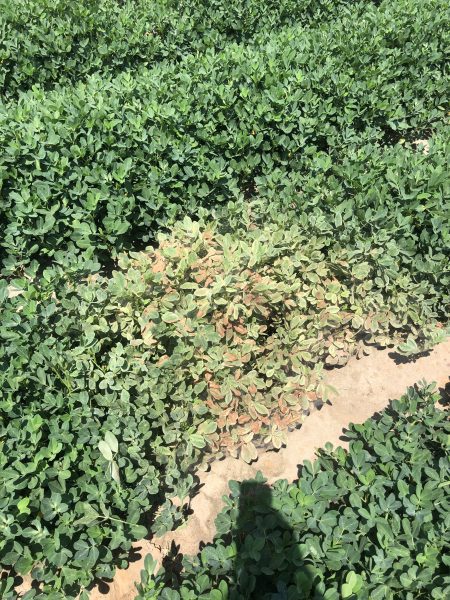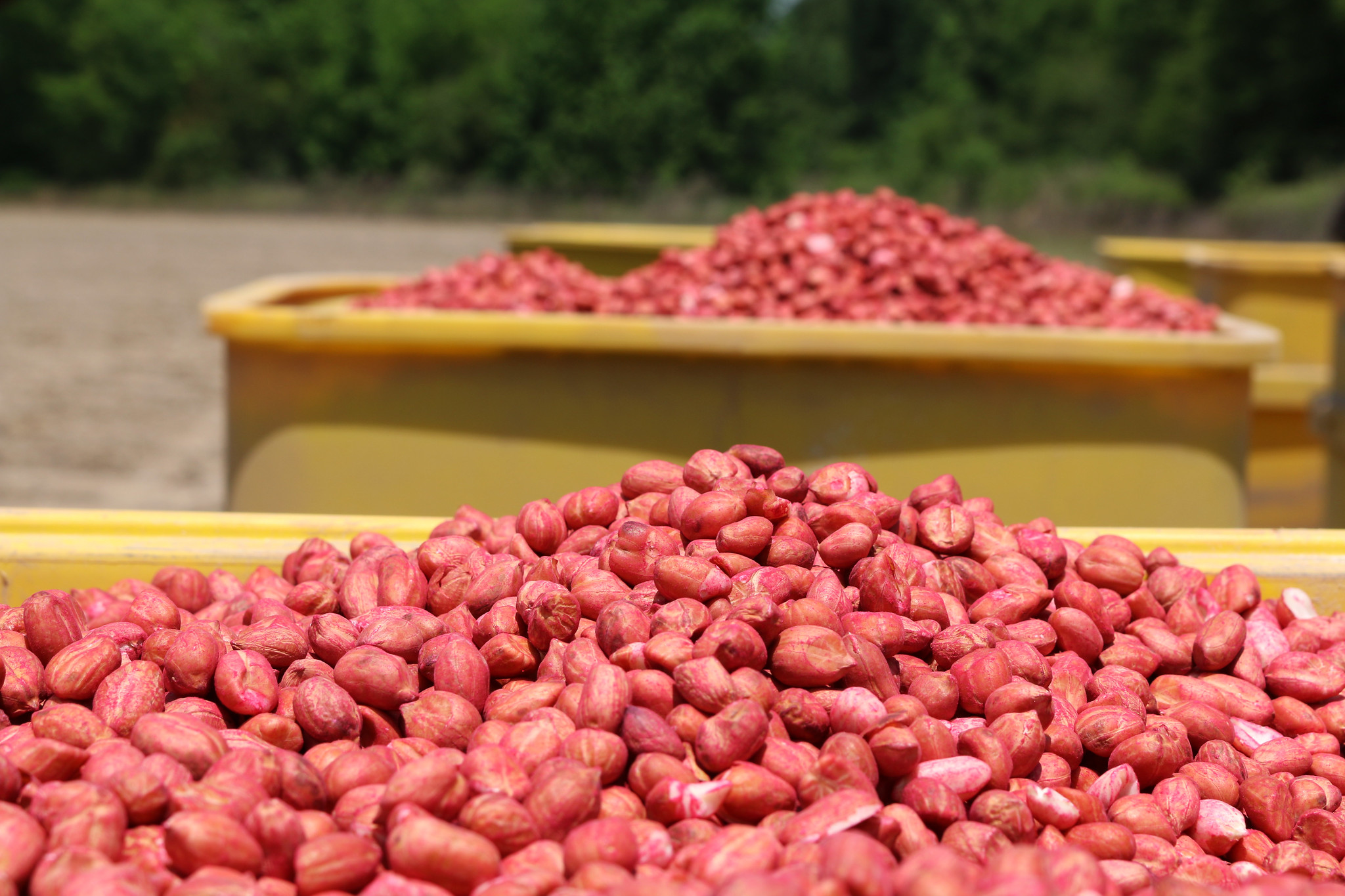Crop Production

To continue to maximize the economics of insect management, proper scouting, pest identification, and insecticide selection is critical. Many of the pests that producers deal with are sporadic and require an understanding of what conditions lead to flaring, as well as how to manage infestations most efficiently when they occur.
Thrips

Tomato Spotted Wilt Virus in Peanuts
Thrips are the most consistent insect pest of peanuts in Alabama. Their pest status is elevated by the fact that in addition to reducing early season vigor, they also may transmit tomato spotted wilt virus (TSWV). Although there are high-yielding, TSWV-resistant varieties available, at-plant insecticides are necessary to protect against thrips.
Currently, phorate (Thimet) is the only option that consistently reduces the incidence of TSWV incidence. Other options for thrips control include aldicarb (granular) and imidacloprid (liquid). While these options have not been proven to consistently reduce TSWV, they are good options to manage thrips and help increase early season peanut growth. In trials last season, the addition of an at-plant insecticide provided an average yield increase of 1,990 pounds over the non-treated yield. In some cases, supplemental foliar thrips sprays may be needed if the plants are stunted from other factors such as herbicide injury, seed quality, nematodes, etc. Foliar options include acephate and Radiant. Although acephate is an economical choice, Radiant is less likely to flare spider mites.
In addition to the use of high-yielding and disease-resistant varieties and at-plant insecticides to manage TSWV, producers can also utilize cultural practices such as tillage, planting date, and row spacings. Research and Extension personnel from across the Southeast publish the Peanut Rx Guide each year available at peanuts.caes.uga.edu. This resource gives the risk of TSWV incidence in a field based on several factors. Additional information on TSWV is in the Alabama Extension publication Tomato Spotted Wilt Virus on Peanuts available at www.aces.edu.
Other Pests

Velvetbean Caterpillar

Spider Mites in Peanuts
The loss of chlorpyrifos (Lorsban) complicates control of peanut burrower bugs (PBB) and corn rootworms. Unfortunately, there are not any chemical options for control of these sporadic pests in 2022. The good thing is PBB are only a problem in reduced-tillage fields and is worse in hot, dry conditions. In fields with previous issues with PBB, tillage is an option to reduce populations. On the other hand, fields with heavier soils and irrigation tend to be at higher risk of infestations of corn rootworms. Understanding these pest habits can help us understand the in-season risk of infestations of these pests.
Spider mites are a sporadic, hot-and-dry-weather pest that may flare following sequential applications of broad-spectrum insecticides. Keep in mind that mites are likely in every field at low levels all season long just waiting on conditions to be conducive for populations to explode. Comite II and Portal are the only labelled options available for spider mite management in 2022.
Defoliating caterpillars, including tobacco budworms (TBW), cloverworms (GCW), corn earworms (CEW), soybean loopers (SBL), and velvetbean caterpillars (VBC) may infest peanuts at various times during the season. Proper scouting and identification is critical, as VBC and GCW can be controlled with most labeled insecticides. However, SBL must be managed with the “newer” chemistries (Prevathon, Intrepid Edge, Besiege, etc.).
Lesser cornstalk borers (LCB) are another sporadic in hot-, dry-weather pest. Late-planted, non-irrigated sandy fields are at increased risk of LCB. Sometimes a well-timed rain or irrigation event is all that is needed to manage LCB, but when rain is lacking in dryland fields insecticides may be needed. Prevathon, Diamond, and Besiege are options to control populations and reduce damage.
Summary
The best way to manage insects is to scout fields and treat only when necessary. Insects are different from other production practices and most of the time should not be managed preventatively or on a schedule. Often, decisions are made on a weekly basis.
For more information on thresholds and insecticide recommendations, visit the Alabama Extension Peanut IPM Guide. To stay up-to-date on the Alabama peanut insect situation, subscribe to the Alabama Crops Report newsletter and podcast and the Pest Patrol hotline.
Trade names are used only to give specific information. The Alabama Cooperative Extension System does not endorse or guarantee any product and does not recommend one product instead of another that might be similar.

